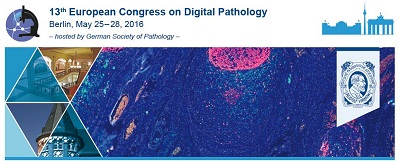Correlations Between Interstitial Stromal Fibrillary Network And Disease Progression In Hepatitis C
Abstract
Introduction/ Background
Since the virus description in the 80s [1] , [2], the infection with hepatitis virus C (HVC) became a real health problem because 50-80% of acute HVC infections evolve to chronic hepatitis, from which 4–20% of patients develop liver cirrhosis within 20 years and, finally, the risk of developing HCC of patients with liver cirrhosis is 1–5% per year [3]. The principal stage of pathological processes is the interstitial space and mainly the portal areas. Fibrillary network, one of the important components of the interstitial space, undergoes dramatic and highly variable changes, fibrosis representing one of the elements of the morphologic triad of the pathologic conflict within the liver parenchyma.
Aims
The aim of the study is to assess quantitatively the liver fibrosis on biopsy fragments of patients with virus C hepatitis (VCH) and to compare it with the fibrosis score described qualitatively in METAVIR system.
Methods
The studied material was represented by liver biopsies from 87 patients with VCH. Tissue fragments were processed following classical histological techniques (formalin fixation and paraffin embedment) and serial sections were stained, for each case, with Hematoxylin Eosin and Mason Trichrome. Tissue fragments images were acquired with a dedicated optical system, using   the X10 objective and the portal and periportal areas were acquired using X20 objective. The fibrosis was firstly assessed using METAVIR qualitative score for fibrosis (MV-F1, MV-F2 and MV-F3). There were no cases with no fibrosis or with cirrhosis. The quantitative parameters determined were: total area of examined hepatic parenchyma, portal spaces area, total area of fibrosis and area of portal fibrosis. The quantitative parameters calculated were: the percentage of the total parenchymal area represented by fibrosis (TF/TA-HP), the percentage of the parenchymal area represented by the portal spaces (PS-A/TA-HP), the percentage of the portal spaces represented by the portal fibrosis (PS-F/PS-A). The measurements were made with two dedicated software programs, after preceding software calibration. For numerical parameters minimum (MIN), maximum (MAX) mean (AV) values and standard deviation (STDEV) were calculated. For comparison with METAVIR fibrosis score grades, the values of quantitative parameters calculated were stratified in classes. For statistical analysis of the correlation between the quantitative and qualitative assessment of fibrosis, t-test (2-sample, unequal variance), One-Way ANOVA test and χ2 test were used.
Results
TF/TA-HP and PS-A/TA-HP correlated with the METAVIR degrees of fibrosis (Figure 1). Both correlations were statistically validated at very high significance level. (Figure 2). In turn, PS-F/PS-A didn’t correlate with the METAVIR degrees of fibrosis, as statistical tests revealed (Figures 1 and 2).So, in VCH, one of the main morphological aspects is the constant enlargement of portal spaces but with a reduced extension of the destructive and reparatory processes towards the lobule center. Collagen fibers production is not an accelerated process, being in a relative equilibrium with the reactive inflammatory cellular population as demonstrated by the relatively constant percentage of the portal spaces represented by the fibrillary structures.

Figure 1.

 Figure 2.
Downloads
References
[2] Kuo G., Choo Q.L., Alter H.J., Gitnick G.L., Redeker A.G., Purcell R.H., Miyamura T., Dienstag J.L., Alter M.J., Stevens C.E., et al, An assay for circulating antibodies to a major etiologic virus of human non-A, non-B hepatitis, Science 1989, 244(4902):362-364.
[3] Brass V., Moradpour D., Blum H.E., Hepatitis C virus infection: In vivo and in vitro models, J Viral Hepat 2007, 14:64–67.

This work is licensed under a Creative Commons Attribution-ShareAlike 4.0 International License.
Authors who publish with this journal agree to the following terms:
1. Authors retain copyright and grant the journal right of first publication with the work simultaneously licensed under a Creative Commons Attribution License that allows others to share the work with an acknowledgement of the work's authorship and initial publication in this journal.
2. Authors are able to enter into separate, additional contractual arrangements for the non-exclusive distribution of the journal's published version of the work (e.g., post it to an institutional repository or publish it in a book), with an acknowledgement of its initial publication in this journal.
3. Authors are permitted and encouraged to post their work online (e.g., in institutional repositories or on their website) prior to and during the submission process, as it can lead to productive exchanges, as well as earlier and greater citation of published work (See The Effect of Open Access).
4. In case of virtual slide publication the authors agree to copy the article in a structural modified version to the journal's VS archive.








